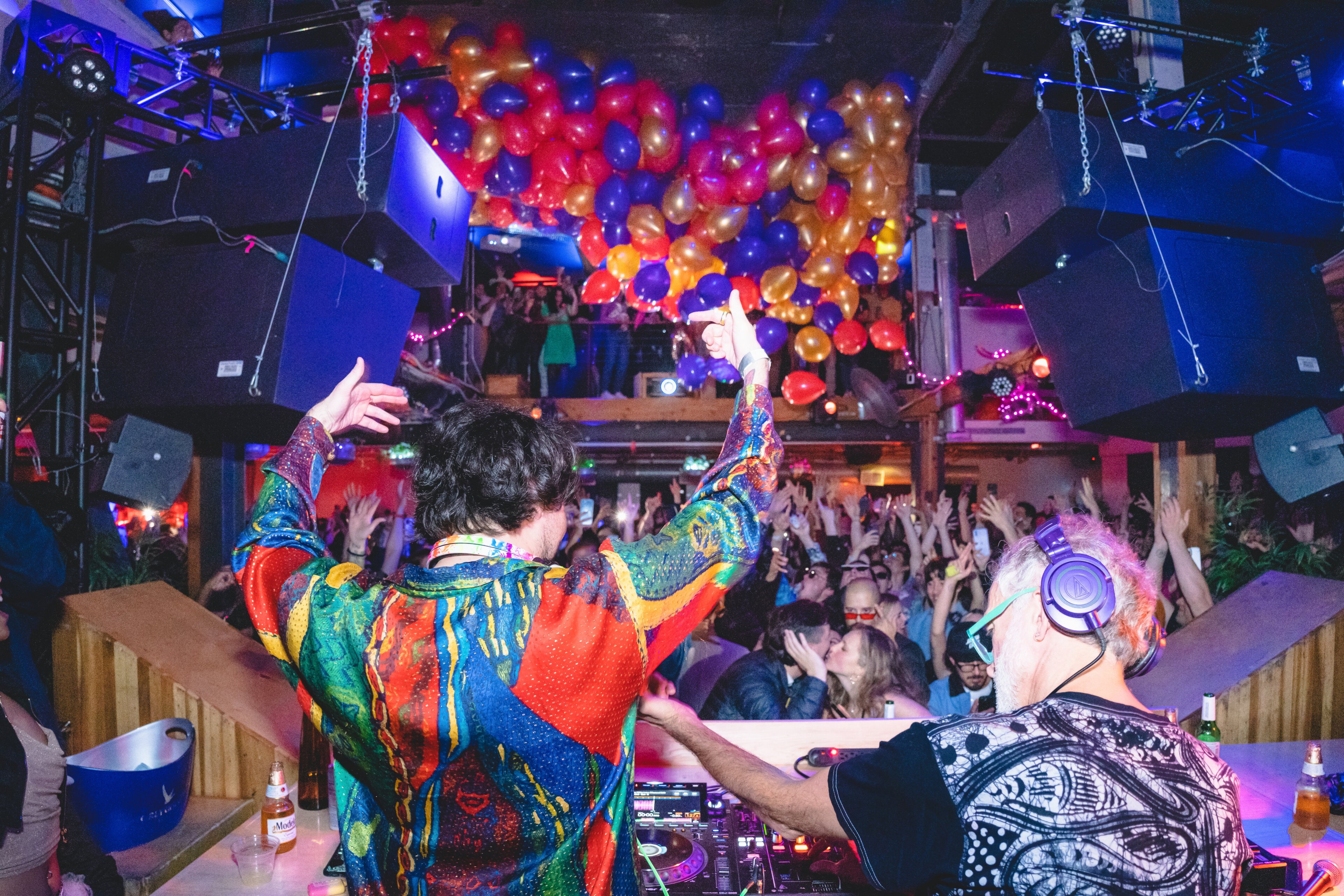A dead-end street abutting a freeway on-ramp in a quasi-industrial part of San Francisco’s Mission District probably sounds like either the best place or the worst place to hang out at night, but it’s where Public Works has thrived for the last 13 years.
Public Works—which is to say, the club and not the scandal-ridden city department whose offices are a few blocks away—is a unique treasure in San Francisco’s nightlife ecosystem. It’s roughly the size of 1015 Folsom or the Great Northern, but there’s something different about Public Works’ vibe, beyond its conspicuously low ticket prices.
Beloved by scenesters and independent promoters alike, it survived the pandemic largely because the location on dead-end Erie Street allowed Public Works to put tables and a DJ setup outside, playing music at a volume somewhere between pulsating and library-appropriate.
Even still, the nightlife scene has shifted, forcing clubs everywhere to change.
“Our crowd that has been supporting us for years is not going out as much,” said co-owner Jeff Whitmore. “They got older, they found the suburbs, they found sleep and they got out of the habit of going out three nights a week. But it’s exciting, because we get to look into styles and genres we haven’t played before.”
This need for experimentation has brought new audiences into Public Works, which has historically been a home for house and techno and is now leaning into other, more bass-heavy electronic subgenres. As it happens, this is something that bar owners citywide have echoed: San Francisco is constantly portrayed as circling the drain, yet fresh waves of new arrivals are finding their way here, as enraptured with the city’s magic as all those who came before.
This weekend, what they’ll find is the venue’s 13th anniversary, a triskaidekaphobia-be-damned, three-night party featuring DJs the world over, from London-based Hamdi to Berlin’s Lovefoxy. Five years ago, these were not names that would have played at Public Works—let alone for an anniversary.
Rob Casanovas, Public Works’ general manager, used to work at the much-missed SoMa venue Mezzanine. These days, he feels like he’s helping usher in a new San Francisco, at both the venue and its satellite salon space in the Tenderloin’s Little Saigon microhood.
“Everybody knows it’s happening. I think the city’s actually swinging back better than ever. New people coming in through the door that just moved in,” he said. “It’s revitalizing to hear a fresh perspective on how beautiful the city is when the narrative for so long has been the city’s going to shit.”
Public Works’ ownership structure has some overlap with the Midway, the much-larger club and conference center in Dogpatch, but their working relationship is very informal, mostly on the level of borrowing chairs from each other.
Big-name artists who can fill much larger spaces routinely play Public Works, which has a capacity for only a few hundred people. The hugely popular John Summit, for example, played at Public Works over Memorial Day weekend. Granted, the show sold out within 90 minutes, but his other shows in the Bay Area this year included a block party for 7,000 people and a set at Stanford University’s Frost Amphitheater.
Local independent promoters echo artists’ love for the venue as well.
Syd Gris is a longtime producer who throws parties under Opel Productions and for Opulent Temple, the 20-year-old Burning Man camp and nonprofit that stages fundraisers throughout the year. He appreciates the niche that Public Works fills, as independents like him are limited to a few clubs around the city.
“Some venues prefer to do most of their stuff in-house, so they don’t have to pay the promoter any of the money that comes in the door—and even when a venue will work with promoters, it’s not always on terms that make it worth the risk,” Gris said. “A venue like Public Works is key to my survival, and I’m sure I don’t speak for myself.”
Muralist Elliott C. Nathan—whose joyously exuberant pieces fill up entire walls around San Francisco—has thrown the hyper-inclusive dance party Electroluxx at Public Works with his business partner Brett Mendenhall for years, partly because “they don’t say no to weird stuff” and the employees treat patrons with respect.
“Sometimes you find venues, and even if it’s great, the security is rough—and that’s the first experience of anyone who goes in,” he said. “Public Works ensured that their security is kind and generous and aware of the type of crowd, so having a party that leans into the queer community, they understand how to interact with everyone.”
While small record labels that nurture new talent are often “rewarded” by their artists outgrowing them and moving on, small venues can brag that giant acts played there way back when.
In Public Works’ case, those names include Jamie XX, the Martinez Brothers, Black Coffee and other people who’ve gone on to play renowned festivals like Bonnaroo or Coachella. As booking assistant Alec Mann put it, the club’s history tracks the development of dance music.
“It’s crazy to see the underground moving into the mainstream,” he said. “I like to think Public Works had a big role in giving into these nuanced sounds that are at the forefront of production.”
